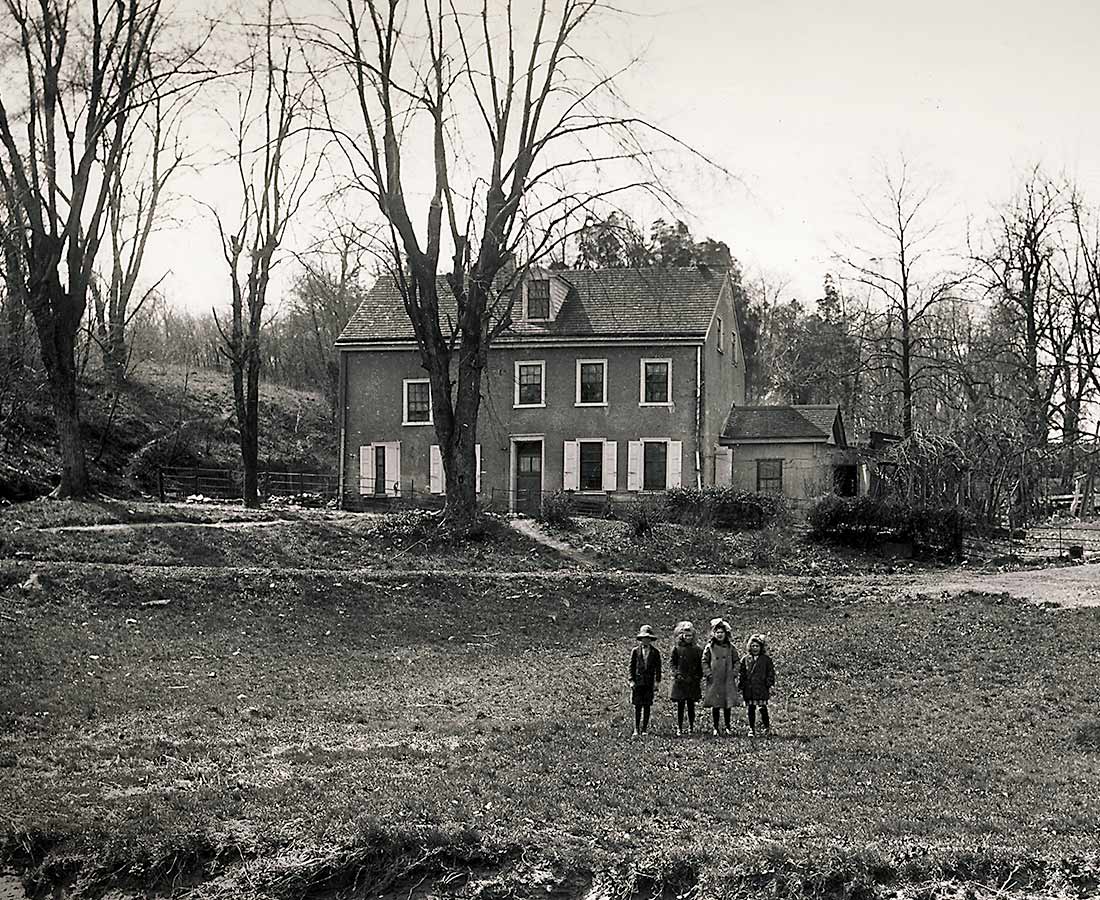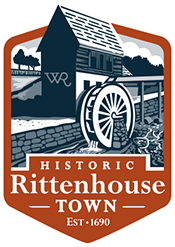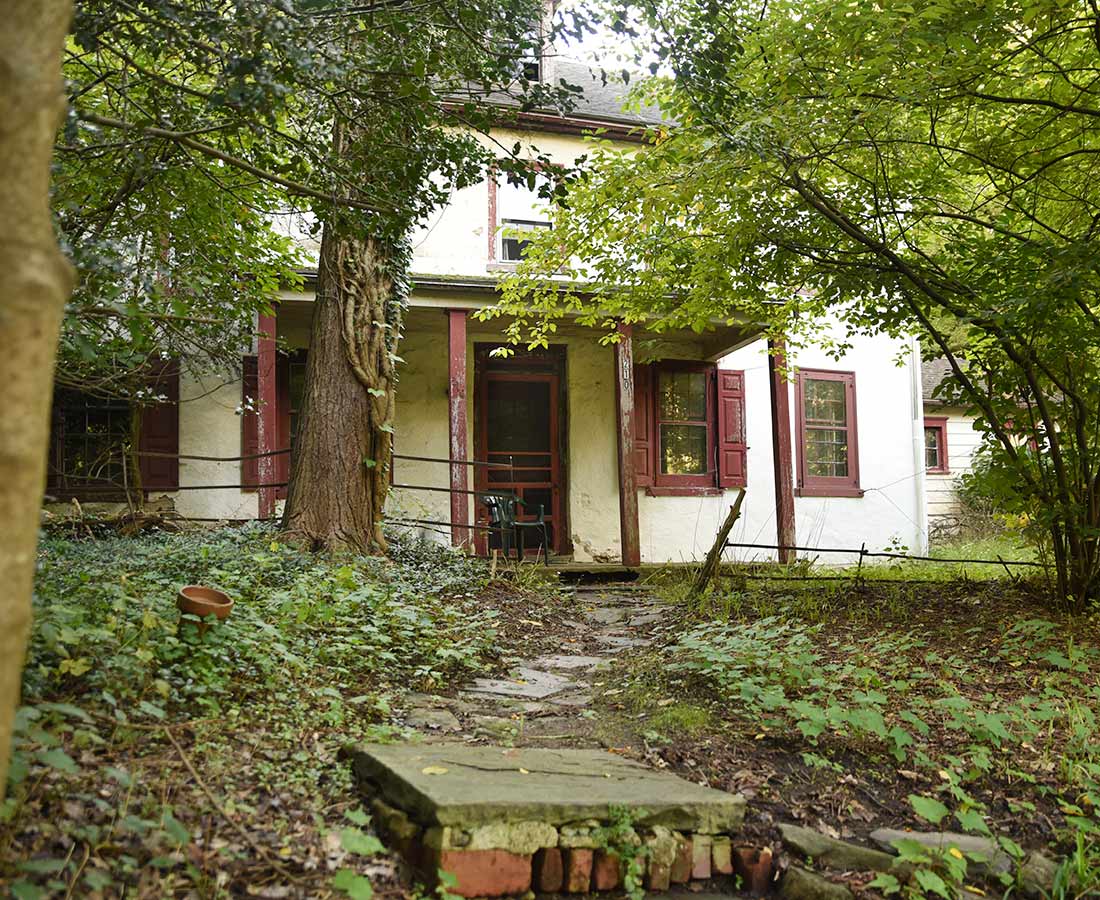
The Rittenhouse village home (#210) ca. 1900, photo by Thomas Shoemaker
This ca. 1750 Rittenhouse Home, once the residence of Margaret Rittenhouse until her death in 1817, is awaiting historical restoration. With the help of donors like you, we can preserve and protect this quaint structure and official reintroduce it to this hidden gem of a village in Philadelphia.
In 1891, Historic Rittenhouse Town resident and family descendant Thomas J. Givens deeded this home to the City of Philadelphia.
Since its incorporation into the Wissahickon Valley section of Fairmount Park, it has been continuously occupied, serving as a boarding house for descendants of Thomas J. Givens, an art school, and a private residence.
Historically, the first mention of the land on which the present Rittenhouse home (#210) was built comes in 1774 when William3 (1691-1774) willed a portion of the 200 acres he had amassed during his lifetime to his son Nicholas4 (1719-1787) who, in that same year, gave the land to his brother William4 (ca. 1720-1793) along with additional adjacent land and a stone dwelling he had acquired in 1772.
It’s possible this stone structure was the first home built on the land, but proof remains elusive. From 1793 to 1817, William’s widow Margaret lived in this home. Her property also included an earlier stone barn, which is the present site of the ca. 1938 barn and the location of the paper studio and offices of Wissahickon Restoration Volunteers.
At Margaret‘s death in 1817, William’s nephew, William5 (1750-1817) received control of the property. Beyond William4 and his wife, Margaret, little is known about the Rittenhouse occupants.
Evidence inside the structure confirms an addition to the east side, the date uncertain. The gable end which once faced the road was turned to connect with the roofline of the addition. While the building is in desperate need of restoration and preservation work, much of the original fabric remains.
*The numbers in superscript identify the generation in which this individual lived — in this case William, of whom there were many along the Rittenhouse family line. It does not imply any direct descent from the papermaker William (1644-1708). It is commonplace to use numbering to distinguish between people with the same name in the same generation.

